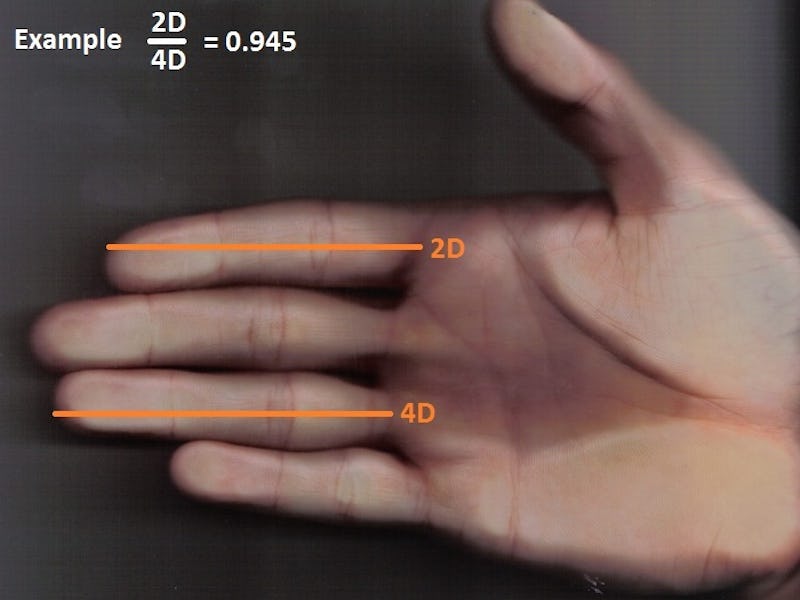Finger Ratios Determining Wealth Is Straight-Up Bullshit

Repeating a false statement will not make it true, no matter how many times you do it. But if you keep repeating something, whether it’s true or not, people are more likely to believe it. Perhaps that’s why this myth about using finger measurements to predict infidelity, athleticism, and even cancer risk simply refuses to die. This week, the world was graced with yet another study on the subject. Published in the journal Economics & Human Biology, this Russian study claims that in utero exposure to testosterone, as measured by the ratio of a person’s ring finger to their index finger, can predict how successful the person will be in the labor market. We’re not buying it.
There are a few reasons why there isn’t enough evidence to draw this conclusion, but let’s limit our focus to one huge reason: There’s not enough evidence to say with certainty that finger length ratios — known as 2D:4D, for the ratio between second and fourth digits — can be used to predict fetal testosterone levels. Ever since British researcher John Manning published a study in 1998 that linked ring fingers that are notably longer than index fingers to lower fetal testosterone exposure, other researchers have run wild with the finding. A study published in Evolution and Human Behavior in 2003 found a link between a particular mutation in an androgen receptor gene and 2D:4D ratio. But this study only had 50 subjects, and subsequent research found it lacking.
In 2012, Elizabeth Hampson and Janani Sankar published a study in the journal Evolution and Human Behavior that scrutinized Manning’s hypothesis. They replicated the 2003 study with three times as many subjects, and were not able to find support for the hypothesis that this gene variation was correlated with 2D:4D. “These data question one of the fundamental pieces of evidence on which the Manning hypothesis rests,” wrote the authors, “and raise new issues regarding the extent to which 2D:4D is a valid reflection of differences in fetal testosterone action in normally developing individuals.”
In short, the hypothesis underlying the new Russian study, which compares 2D:4D ratio with wages, is incredibly shaky. In light of that fact, it does not seem responsible or sound to claim that 2D:4D ratio can help scientists predict anything.
Beyond that, this particular study only found a significant correlation between 2D:4D and wages when controlling for occupation and education. “Male results are not significant before controlling for education, occupation, and industry,” write the authors. “The lack of correlation when these are not controlled either means that these choices are less driven by prenatal [testosterone] for men or else that some degree of non-monotonicity or inconsistency in terms of the effects of prenatal [testosterone] on education, occupation, and income cause these effects to be muted when individual choices are not controlled.” In other words, only with very particular methods of statistical analysis were the researchers able to show a significant relationship between fetal testosterone exposure and wages.
With very little evidence that 2D:4D ratios can help us predict wages, why focus on it? There’s plenty of evidence that other factors can more accurately predict wages. For instance, going to college has a strong positive impact on wages. And just as importantly, your gender, the ethnicity of your family, and the socio-economic status of your neighborhood strongly predict your wages. So let’s move on from this finger ratio deal and instead focus on the factors that have actually been proven to predict wages.